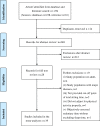A cut-off of daily sedentary time and all-cause mortality in adults: a meta-regression analysis involving more than 1 million participants
- PMID: 29793552
- PMCID: PMC5998593
- DOI: 10.1186/s12916-018-1062-2
A cut-off of daily sedentary time and all-cause mortality in adults: a meta-regression analysis involving more than 1 million participants
Abstract
Background: The appropriate limit to the amount of daily sedentary time (ST) required to minimize mortality is uncertain. This meta-analysis aimed to quantify the dose-response association between daily ST and all-cause mortality and to explore the cut-off point above which health is impaired in adults aged 18-64 years old. We also examined whether there are differences between studies using self-report ST and those with device-based ST.
Methods: Prospective cohort studies providing effect estimates of daily ST (exposure) on all-cause mortality (outcome) were identified via MEDLINE, PubMed, Scopus, Web of Science, and Google Scholar databases until January 2018. Dose-response relationships between daily ST and all-cause mortality were examined using random-effects meta-regression models.
Results: Based on the pooled data for more than 1 million participants from 19 studies, the results showed a log-linear dose-response association between daily ST and all-cause mortality. Overall, more time spent in sedentary behaviors is associated with increased mortality risks. However, the method of measuring ST moderated the association between daily ST and mortality risk (p < 0.05). The cut-off of daily ST in studies with self-report ST was 7 h/day in comparison with 9 h/day for those with device-based ST.
Conclusions: Higher amounts of daily ST are log-linearly associated with increased risk of all-cause mortality in adults. On the basis of a limited number of studies using device-based measures, the findings suggest that it may be appropriate to encourage adults to engage in less sedentary behaviors, with fewer than 9 h a day being relevant for all-cause mortality.
Keywords: Cut-point; Inactivity; Recommendation; Review; Sedentary behavior; Sitting.
Conflict of interest statement
Ethics approval and consent to participate
Not applicable.
Competing interests
The authors declare that they have no competing interests.
Publisher’s Note
Springer Nature remains neutral with regard to jurisdictional claims in published maps and institutional affiliations.
Figures



References
-
- van Dyck D, Cerin E, De Bourdeaudhuij I, Hinckson E, Reis RS, Davey R, Sarmiento OL, Mitas J, Troelsen J, MacFarlane D. International study of objectively-measured physical activity and sedentary time with body mass index and obesity: IPEN adult study. Int J Obesity. 2015;39(2):199–207. doi: 10.1038/ijo.2014.115. - DOI - PMC - PubMed
-
- Young D, Hivert M-F, Alhassan S, Camhi S, Ferguson J, Katzmarzyk P, Lewis C, Owen N, Perry C, Siddique J, et al. Sedentary behavior and cardiovascular morbidity and mortality: a science advisory from the American Heart Association. Circulation. 2016;134:e262–e279. doi: 10.1161/CIR.0000000000000440. - DOI - PubMed
-
- UK Department of Health . Physical activity guidelines for adults (19–64 years) London: Department of Health; 2011.
Publication types
MeSH terms
Grants and funding
LinkOut - more resources
Full Text Sources
Other Literature Sources
Medical

